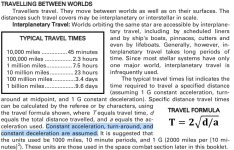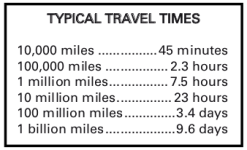You are using an out of date browser. It may not display this or other websites correctly.
You should upgrade or use an alternative browser.
You should upgrade or use an alternative browser.
The Bridge, Ship Size, and Hull Size
- Thread starter robject
- Start date
mike wightman
SOC-14 10K
I agree with Another Dilbert, here is what it says in HG80 page 22
And on page 27It is possible to include standard drives (at standard prices)
from Book 2 if they will otherwise meet the ship's requirements; such drives
use fuel as indicated by the formulas in Book 2.
The only point of discussion is if you can mix them. I don't see why you wouldn't use Book 2 m-drives on every ship up to 2000t.Drives obtained from Book 2 require use of the fuel formulas from Book 2.
Last edited:
Liked for this.The only point of discussion is if you can mix them. I don't see why you wouldn't use Book 2 m-drives on every ship up to 2000t.
And on page 27
How much fuel should a LBB2 maneuver drive use?Drives obtained from Book 2 require use of the fuel formulas from Book 2.
Edit to add: I'm referring back to LBB2'77 where the power plant existed solely to support the maneuver drive (give or take Double-Fire capability). The maneuver drive handwave changed in '81 (from rocket exhaust to grav drive) but the characteristics of it did not.
Edit2: Post #104 beat my edit.
Last edited:
Varies by which LBB2... 77 is some fraction on 10Pn; 81 is none...Liked for this.
And on page 27
How much fuel should a LBB2 maneuver drive use?
Which wasn't quite my question -- or rather, kind of was, after my edit-while-you-were-posting. '77 rules had the fuel used by the power plant and maneuver drive in tandem since there was an implied integration of the two components.Varies by which LBB2... 77 is some fraction on 10Pn; 81 is none...
Oh, wait. This gets weird.Which wasn't quite my question -- or rather, kind of was, after my edit-while-you-were-posting. '77 rules had the fuel used by the power plant and maneuver drive in tandem since there was an implied integration of the two components.
HG'80 changed the HG M-Drive to a grav drive before LBB2'81 came out, so for a while there the controlling system for LBB2 was still the '77 rules*.
Rules that included fusion-rocket maneuver drives.
Which is to say, LBB2 maneuver drives (rockets using the power plant exhaust) would have been incompatible with HG powerplants (that only supply electric power to a grav drive along with everything else) when HG'80 came out.
This didn't change until LBB2'81.
-------------
*plus the optional accessory jump governor component.
Last edited:
True. On the other hand, they did fix the LBB2 jump governor issue in HG1 (I think -- or was it in an issue of JTAS?)That's an artifact of rules having to wait for the next print runs. Traveller was doubtless interesting in 1980.
AnotherDilbert
SOC-14 1K
As Mike showed, it's explicitly allowed.HG describes itself as "...a system for construction of very large vessels, and includes provisions for use of the system with smaller ships". (Bold added). Mixing drives between LBB2 and HG is not using HG as a system; instead, it's cherry-picking it for individual components.
Allowed, not mandatory.And why don't the ships in S9 do this consistently? The SDB on p. 25 would save 29Td by using a MD-C instead of a custom one from HG. The Gazelle would free up 23 Td by using an MD-K. They don't.
I can't pretend that S9 ships are very efficient or fit for purpose.
Wouldn't have worked (due to technobabble incompatibility) when they wrote HG'80, and the writers would have known that. It might have after LBB2'81, to the extent that the writers thought about it.As Mike showed, it's explicitly allowed.
AnotherDilbert
SOC-14 1K
As much as in LBB2, which is negligible, even LBB2'77.How much fuel should a LBB2 maneuver drive use?
The "reaction drive" in LBB2'77 uses power from the power plant, but no propellant.
Only HG'79 talks about "fusion drive", not specifically fusion rocket. Still doesn't use any measurable propellant.
The "reaction drive" in LBB2'77 uses all of the fuel the power plant uses, because the power plant doesn't appear to supply significant power to any other ship system (yet). And it does so at rates explicitly defined as analogous to (but not identical to) LBB2'77 small craft fuel consumption.The "reaction drive" in LBB2'77 uses power from the power plant, but no propellant.
AnotherDilbert
SOC-14 1K
HG'80 didn't require any specific version of LBB2. HG'80, p17 refers to a specific page in LBB2'77.Wouldn't have worked (due to technobabble incompatibility) when they wrote HG'80, and the writers would have known that. It might have after LBB2'81, to the extent that the writers thought about it.
Fuel worked the same in all versions of LBB2 and LBB5: No fuel consumed by the M-drive.
AnotherDilbert
SOC-14 1K
The power plant consumes fuel to produce power for all ship's systems:The "reaction drive" in LBB2'77 uses all of the fuel the power plant uses, because the power plant doesn't appear to supply significant power to any other ship system (yet). And it does so at rates explicitly defined as analogous to (but not identical to) LBB2'77 small craft fuel consumption.
That fuel is enough to accelerate for weeks on end, see p1.LBB2'77, p5: A power plant, to provide power for one trip (internal power, maneuver drive power, and other necessities) requires fuel in accordance with the formula: 10Pn.
Ship's fuel consumption is no-where near small craft consumption.
Power is consumed by other systems (of course):
LBB5'77, p32:
Double Fire: This program allows a ship to draw excess power (if available) from the power plant, and thus increase the output of laser weaponry.
LBB5¨79 expanded to say:
LBB5'79:
Fuel consumption is computed on the basis of ship tonnage and jump number. A jump drive uses fuel equal to 10% of a ship's tonnage per jump number used; the jump drive must, of course, be capable of the jump number attempted. A power plant uses fuel equal to 1% of the ship's tonnage every four weeks, regardless of actual power drain; this usage is primarily to maintain the fusion bottle and other housekeeping functions. Other fuel requirements are considered inconsequential.
You may want to imagine a big rocket on Traveller ships, but that is not what Traveller actually says, even in '77.
No. It's "at least 288 turns" worth, and the entire allocation is used every trip (typically 9 days, though there's no reason a trip couldn't be longer -- especially when not accelerating constantly).That fuel is enough to accelerate for weeks on end, see p1.
If it's just 288 turns, it's at slightly more than triple small craft rates. It's clearly lower than that, but not likely less than the small craft rates.Ship's fuel consumption is no-where near small craft consumption.
Condottiere
SOC-14 5K
One assumes nuclear reactor and jump drive engineering requires a rather qualified and experienced crewman.
On the other hand, maybe all you need is to watch a couple of dials, and adjust some levers, in the fifty sixth century, for twenty tonnes worth.
On the other hand, maybe all you need is to watch a couple of dials, and adjust some levers, in the fifty sixth century, for twenty tonnes worth.
Which require so little power that the '77 version of the XBoat didn't actually require a power plant.The power plant consumes fuel to produce power for all ship's systems:
AnotherDilbert
SOC-14 1K
No. It's "at least 288 turns" worth, and the entire allocation is used every trip (typically 9 days, though there's no reason a trip couldn't be longer -- especially when not accelerating constantly).
LBB2'77, p5-6:
The formula indicates amount of fuel in tons, and all such fuel is consumed in the process of a normal trip. A fully fuelled power plant will enable a starship an effectively unlimited number of accelerations (at least 288) if necessary to use the maneuver drive during the trip (as when miniatures combat is used to resolve a ship to ship encounter).
The combat chapter says:
LBB2'77, p26:
There is no restriction on the number of accelerations which may be made by a fuelled ship, but the total acceleration in a turn in inches, may not exceed the size rating of the M-Drive.
The travel time chart says:

Constant acceleration for 9.6 days is a "typical travel time".
Last edited:
(... and setting aside the preposterous '77 fuel burn rates that ignored the mass of the craft.)If it's just 288 turns, it's at slightly more than triple small craft rates. It's clearly lower than that, but not likely less than the small craft rates.
1 billion miles is not typical. 100D for a Size 8 world is 16.2 million miles (21.6 million km). Each end of a jump between two such worlds requires about one day at 1G for the transit to Jump Limit, assuming a jump at zero velocity wrt the origin world and arrival with zero velocity wrt the destination world.Constant acceleration for 9.6 days is a "typical travel time".
In other words, that's the "at least 288 turns" (2 days) of fuel right there. Enough for a typical trip, but implying enough of a margin to cover trips with refueling at gas giants (and their much greater 100D limits) at each end -- basically, "enough that you don't have to worry about it, just call it all burned-off each trip and it'll balance out over time".
In context, "typical travel time" as used in the infobox means the typical time needed to travel that distance, not that it is a typical distance traveled.
(It's interesting that they used 1G for that infobox, rather than the table provided in the '80 version that covered the range of 1-6Gs.)
Last edited:
AnotherDilbert
SOC-14 1K
It's a game, it has to be simplified. The rocket equation isn't simple enough...(... and setting aside the preposterous '77 fuel burn rates that ignored the mass of the craft.)
LBB2'77, p1 disagrees:1 billion miles is not typical. 100D for a Size 8 world is 16.2 million miles (21.6 million km). Each end of a jump between two such worlds requires about one day at 1G for the transit to Jump Limit, assuming a jump at zero velocity wrt the origin world and arrival with zero velocity wrt the destination world.

109 miles is the rough region of a trip to a gas giant for a quick refuel.
Similar threads
- Replies
- 17
- Views
- 1K
